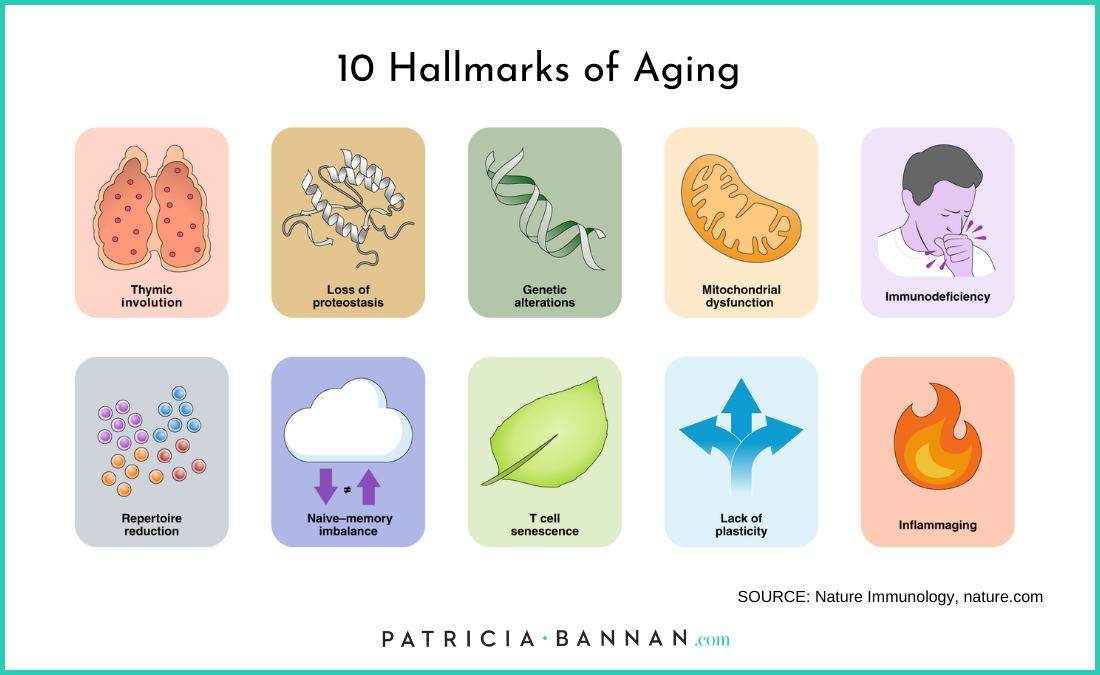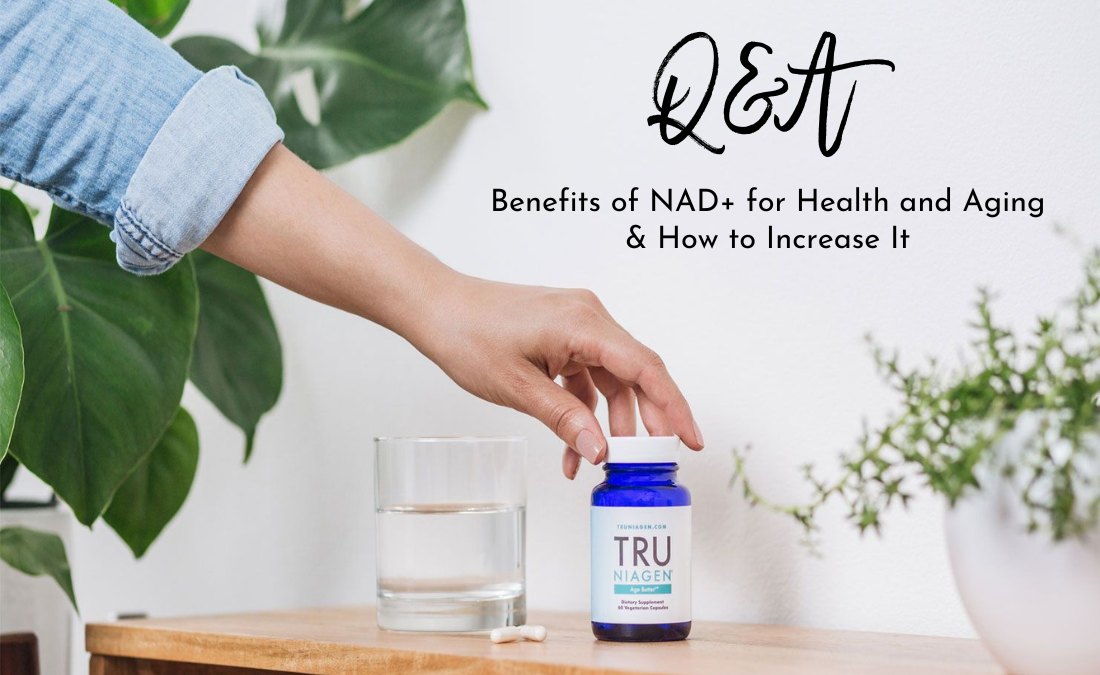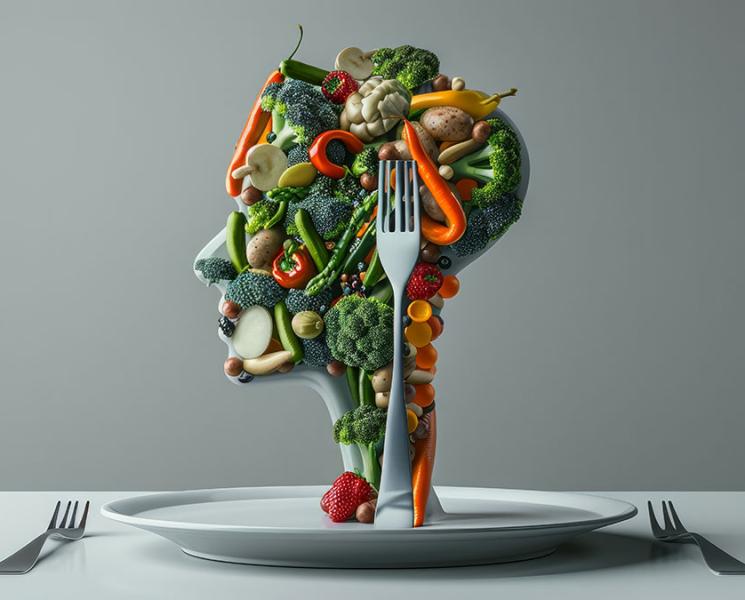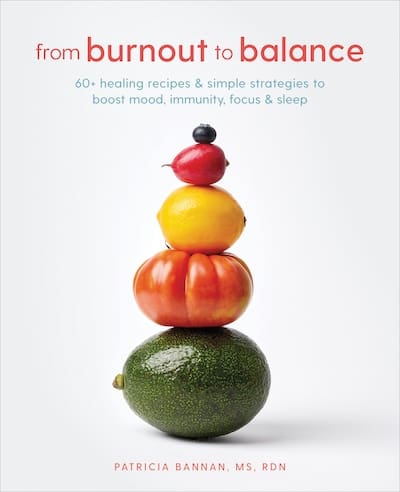Research shows that NAD+ decline is connected to all 10 hallmarks of aging. So here are the key things to know, NAD+ benefits, and the ways to increase it to add health to your years.
Once I hit my 40s, I noticed that my body didn’t quite “bounce back” from stressors the way it used to. From my energy levels to my immune strength to my sleep quality, when faced with taxing situations not only did I seem to get out of sorts faster, I also needed to explore filling my wellness toolbox with new and different ways to recharge my midlife batteries.
As a registered dietitian, I’m always intrigued—both personally and professionally—as to what science-based options are on the forefront to optimize our diets and cellular health as we age.
On that front, earlier this year I had the pleasure of attending a nutrition conference where I met Mona Rosene, MS, RD. She is the Global Director of Scientific Affairs at ChromaDex, maker of Tru Niagen, a dietary supplement that increases levels of NAD+ to help boost cellular energy and improve overall well-being.
Disclosure: This is not a partnered blog and I’ve received no compensation. All opinions are my own.
To help shed some light on what NAD+ is, how it works in the body, and NAD+ benefits, Mona agreed to answer some common questions. We discussed this supplement, including how it’s related to vitamin B3 and ways to incorporate NAD+ into your lifestyle.
1. What is NAD+?
MONA: To start, NAD+ stands for nicotinamide adenine dinucleotide. It is a coenzyme* found in every living cell in the body. NAD+ plays a role in the production of energy and is also crucial for cellular defense and repair.
*Coenzymes are molecules in cells that assist enzymes in carrying out their function.
2. What is nicotinamide riboside (NR)?
MONA: Nicotinamide riboside (NR) is a unique form of vitamin B3 and the most efficient NAD+ precursor (a building block of NAD+). It is activated in during metabolic stress and does not cause flushing like higher doses of another form of B3, niacin.
3. Is NAD+ the same as vitamin B3? What is the difference?
MONA: They are not the same. The B3 vitamins [including niacin (nicotinic acid), nicotinamide (NAM), and nicotinamide riboside (NR)] function as precursors to NAD+, which are building blocks of NAD+.
NR is a unique form of vitamin B3 and the most efficient NAD+ precursor that generates NAD+.
4. What does NAD+ do for the body? What are NAD+ benefits?
MONA: The primary role of NAD+ in the body is to convert energy (calories) from food into cellular energy (ATP) for necessary daily functions. NAD+ also ensures proper cellular function, which can decline as you age and as you are exposed to different metabolic stressors.
Finally, NAD+ protects DNA as you age, and supports cellular defense and repair so your body is more resilient during immune and metabolic challenges. Life would not exist as we know it without NAD+.
5. What does the research show about NAD+?
MONA: Research suggests NAD+ insufficiency or depletion is linked to aging, metabolic (physiological) stress, and a variety of diseases. Developing evidence suggests raising NAD+ may slow or even reverse the aspects of aging and delay progression of age-related diseases.
The 10 hallmarks of aging are shown in the image below and age-dependent NAD+ decline can contribute to all of them.

6. What are the main benefits of nicotinamide riboside (NR)?
MONA: NR has been shown to:
- Increases NAD+ – NR is clinically proven to increase NAD+, which helps your body defend against metabolic stress, such as immune challenges.
- Healthy aging – As you age and are exposed to metabolic stress NAD+ declines. This compromises the function of the cells and mitochondria, the powerhouse of the cell. NR increases NAD+ and supports mitochondrial function, which helps your cells function optimally.
- Cellular repair –By increasing NAD+, NR helps promote cellular repair counteracting the effects of metabolic stress & age on the body. Aging starts at the cellular level and visible signs of aging are often a result of cellular aging.
- Supports cellular energy production (ATP) – This is needed for your body to perform all its voluntary (movement, eating) and involuntary (heartbeat, digestion) functions.
7. Does NAD+ reverse aging?
MONA: No, it doesn’t “reverse” aging. However, maintaining NAD+ allows your body to function properly as you age. Healthy cells = a healthy body.
NAD+ is critical in the production of ATP and cellular defense/repair, which allows your tissues, organs, and thus your body to become more resilient from metabolic stressors over time. This adds health to years so you can enjoy everything you value as you age.
8. How is NAD+ depleted?
MONA: NAD+ is not a constant resource—it’s continually in flux, being consumed and produced. Levels decrease as you age and when your body is under metabolic stress, which decreases the NAD+ “pool” overall. When that pool is depleted, cells don’t function normally, decreasing the ability to bounce back after exposure to stressors.
Some of the most common metabolic stressors include immune challenges, excessive sun exposure, alcohol intake, poor diet, and sedentary lifestyles.
9. How can someone increase NAD+ levels naturally?
MONA: Here are three ways to increase NAD+ naturally to optimize NAD+ benefits and minimize its decline:
- Increase exercise, which will naturally increase NAD+ to accommodate the new strain put on the body.
- Eat a healthy diet, which will mitigate declining NAD+ over time, although you cannot obtain enough B3 vitamins (NAD+ precursors) to increase NAD+ through food alone.
- The RDA for vitamin B3 (niacin) is 15mg/d, which is enough to prevent pellagra (the deficiency disease for niacin), but not enough to increase NAD+ to beneficial levels that support healthy aging.
- Consider supplementing with a proven, well-researched NAD+ precursor such as NR.
10. How do you increase NAD+ levels with supplements and how much should someone take?
MONA: Start with a patented, well-researched form of NR, which can be found in Tru Niagen®. It is backed by over 25 clinical studies, and clinically proven to boost blood NAD+ levels.
One 300 mg dose will increase NAD+ by about 50% in 2 weeks, which is maintained with daily supplementation. Most often it’s suggested for adults to start with 300mg/day to support NAD+ levels.
If someone is experiencing a known metabolic stress, such as an upcoming surgery, exposed to an immune challenge, or a significant physical stress over and above what is normal, NR can be taken in higher doses of 600-900mg/day. Doses up to 2000mg/day have been studied and shown to be safe.
If you are unsure what amount is right for you or have questions based on your individual circumstance, speak with a registered dietitian.
11. Is there anyone who should not take NAD+ supplements? Are there any possible side effects?
MONA: If you have an allergy to any form of vitamin B3 (specifically nicotinic acid or nicotinamide), NAD+ supplements are not recommended. There also isn’t yet clinical safety for current cancer.
Side effects are rare, though some people may have trouble sleeping. This is due to an increase in cellular energy production, so it’s recommended to take in the morning and/or with lunch.
Final Thoughts about NAD+, NR, and NAD+ Benefits
It is clear that there are NAD+ benefits from increasing NAD+ levels, both in the short- and long-term. However, it’s always important to talk to your health care provider about what dietary supplements you are considering taking. You can overdo it on some nutrients, and supplements can also interact with medications.






